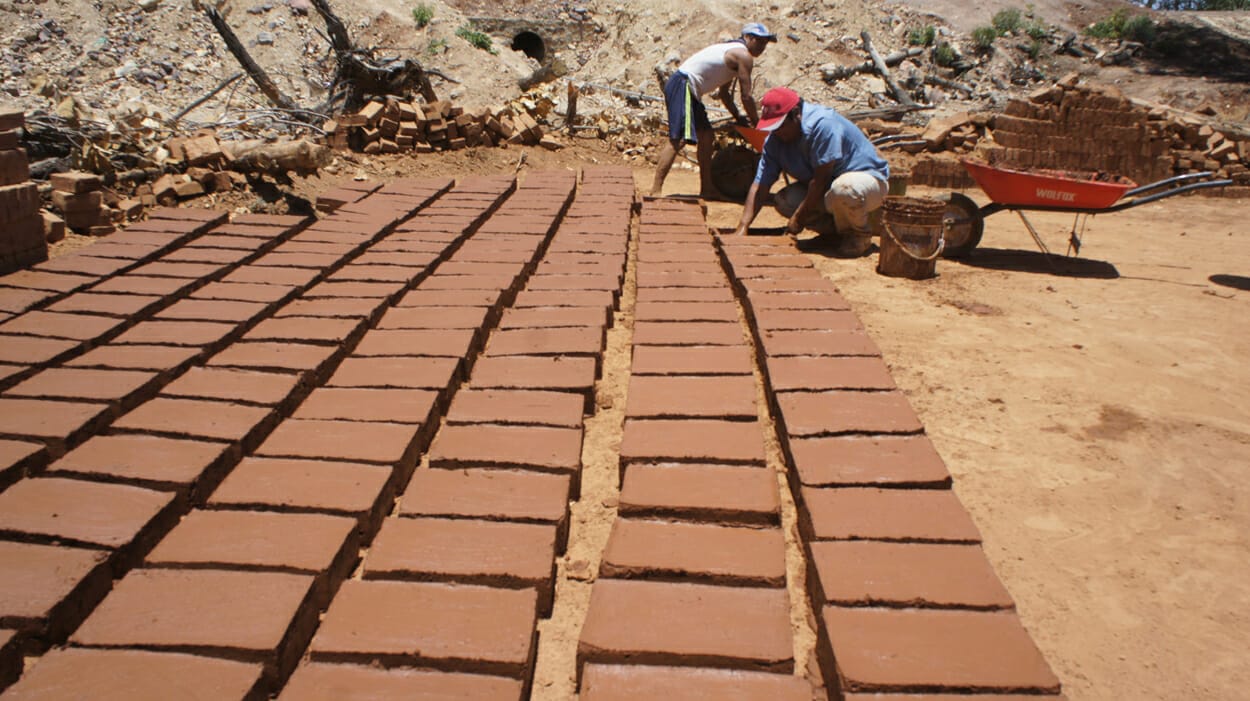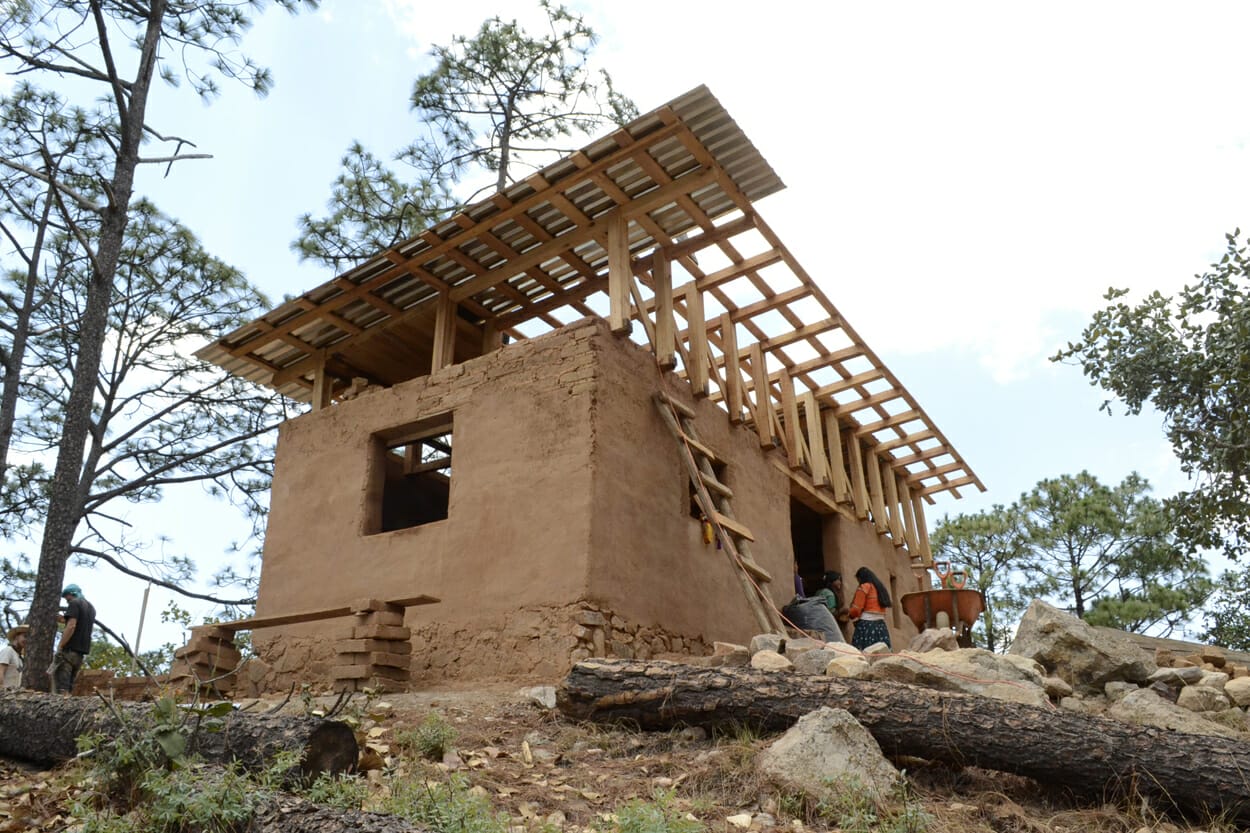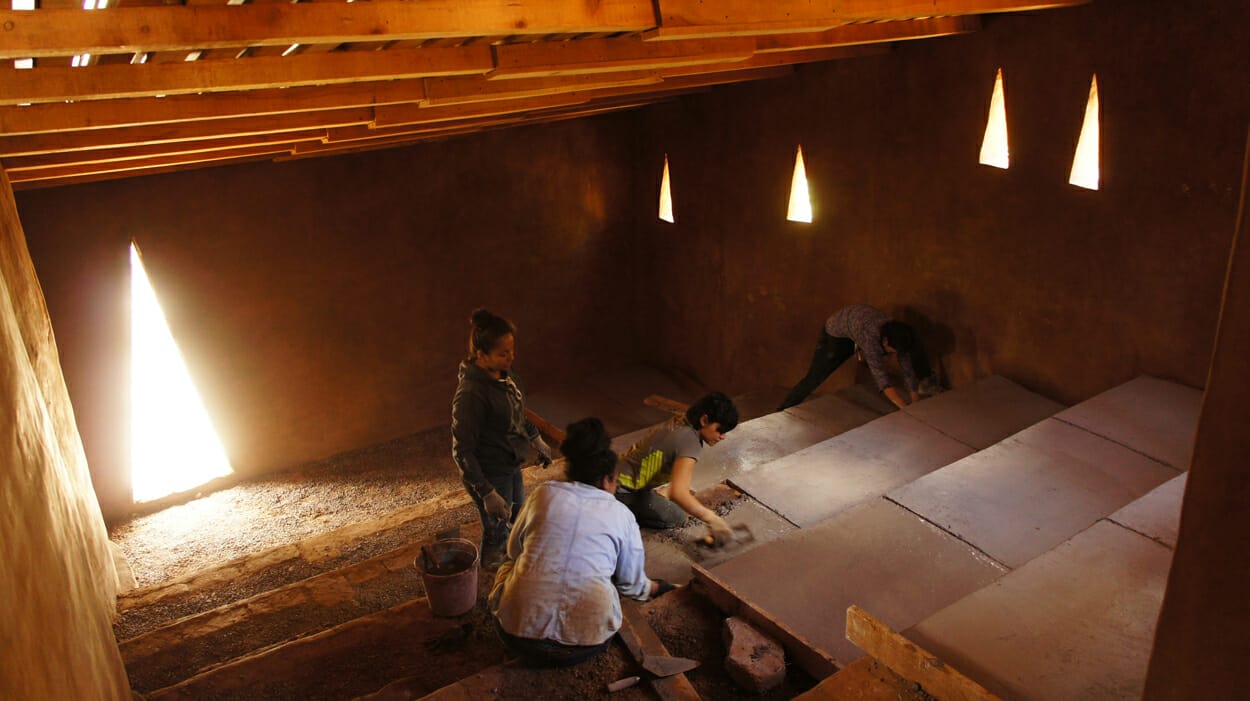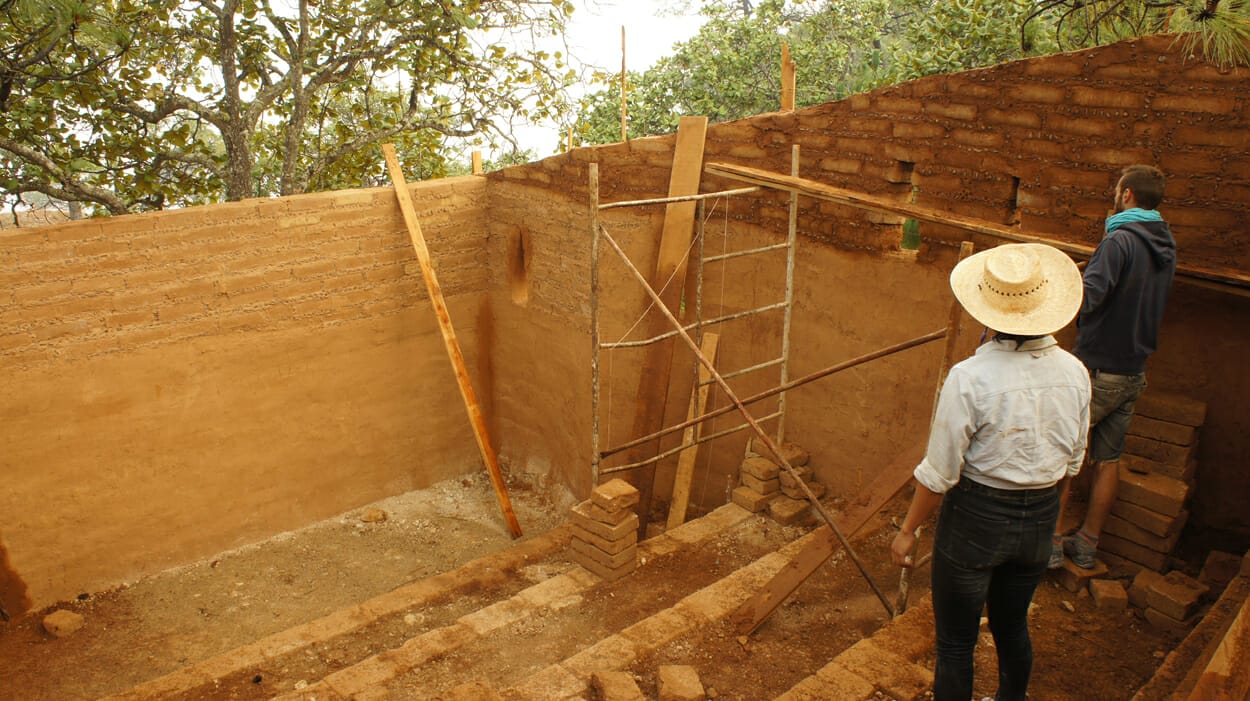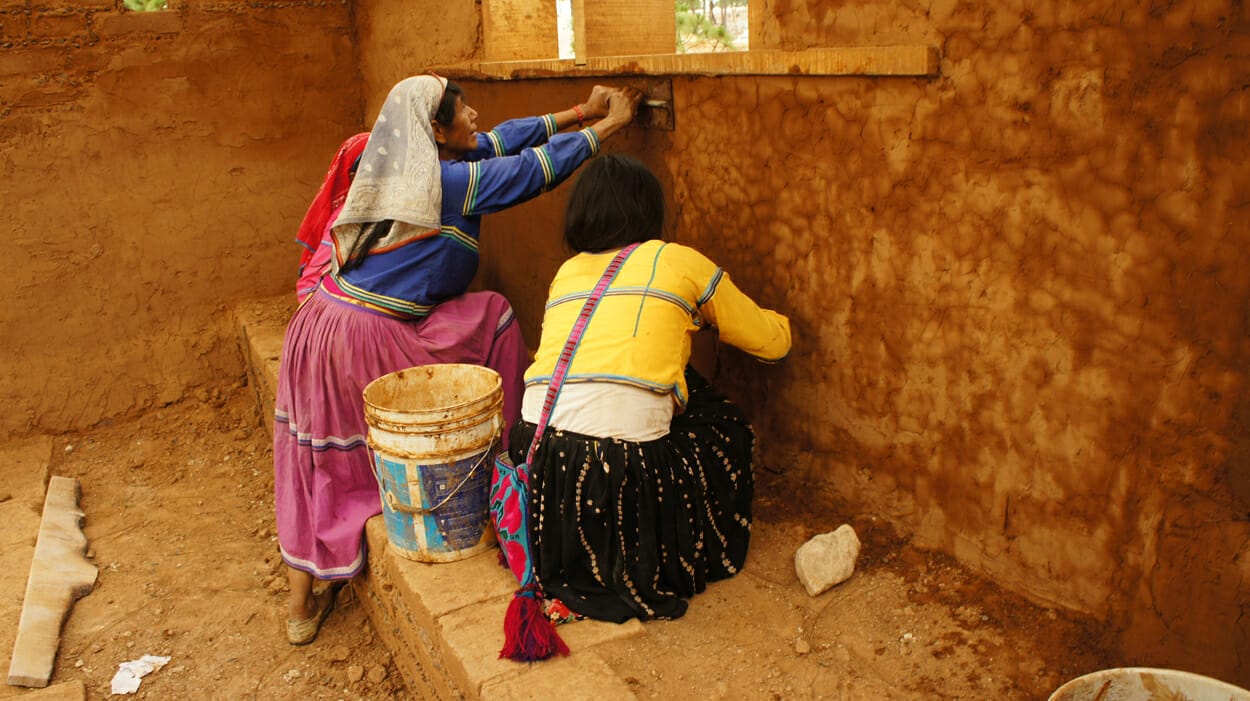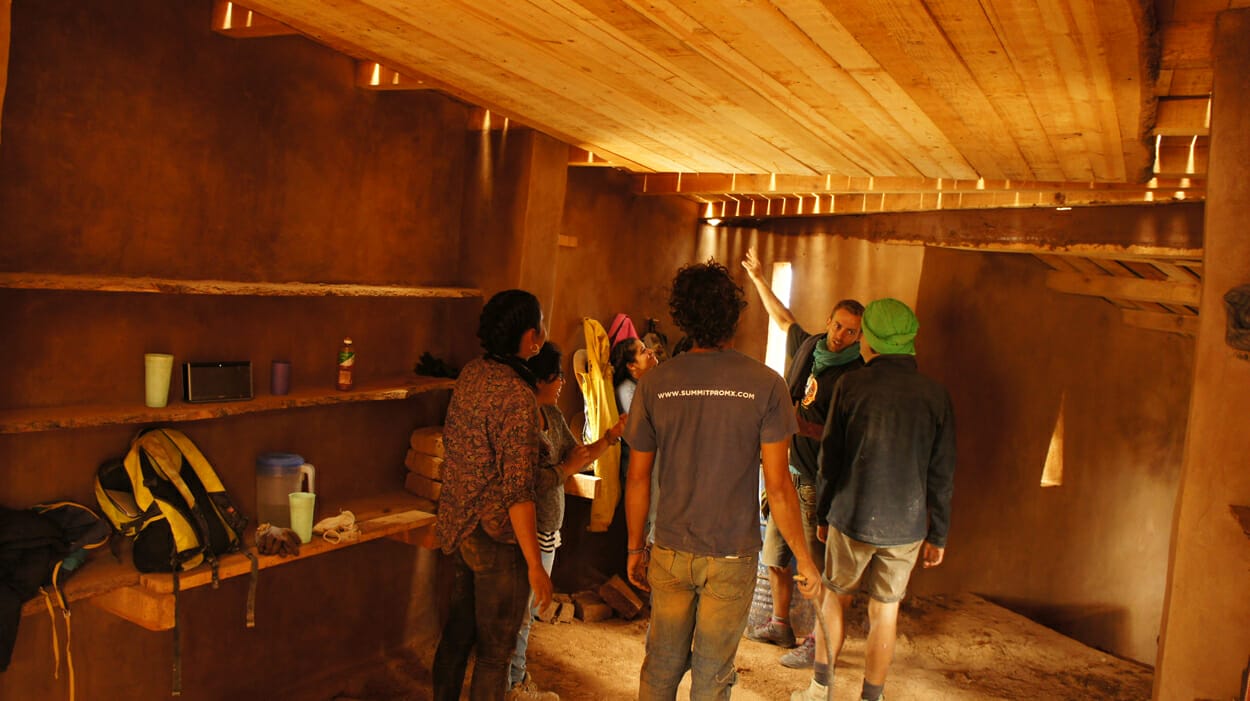A large group of women side by side an enthusiastic group of volunteers —with the support and direction of Programa VACA— constructed in La Cebolleta community, located on the high mountains of Jalisco in Mexico, a community center with a store, workshop, traditional medicine Clinique, an auditorium and a patio. Local materials and the hands of the inhabitants and volunteers achieved in month and a half to finish this place.
Using local wood they constructed 3 different types of rooftops to be used as replica models for the houses, that are build in its majority using natural self-construction, the spaces have metal sheet rooftop for the most necessary recollection of rain water as access to water in this zone is scarce.
Two very easy reproducible elements with hybrid techniques were designed to encourage appropriation of this models and seek the improvement of the existing houses. Earth panels between the roof wooden structures were used and work both as thermic and sound isolation. The triangular windows allow opening spans avoiding the use of a horizontal structural element besides respecting the aesthetic character linked to the wixarika style.
To upgrade the internal and external conditions of the construction we applied finishes made with raw earth and soap. These techniques are very easy to learn, make and apply and in the programme´ s experience we have seen a substantial improvement of the constructions conditions. Being made with local materials with cero cost for the inhabitants there is a quick adoption of the technique principally from the community women who are the ones making the improvements in their own houses.
The use of geometry had as main target to ensure a solid structure. By developing the construction, the future inhabitants realized that the structural elements such as wood inserts will also may be used as shelves and other organization solutions achieving a daily simple and practical operation.
The complex is located on a steep slope which was exploited to make the auditorium stands and a separation between the spaces according to their height without making partitions thus creating a fluid route unfolding through the open of the volumes intersections that at the same time answer to the open spaces between the existing trees.
Thanks to the organization of the three main volumes we secure a central patio where the women may work and enjoy the ample space and at the same time watch their children playing in a safe environment.
The construction was done mainly by a 7 women group, their sons and daughters with the support of 12 volunteers. All the activities were done in month and a half within the community with a total budget of 773 pesos per square meter that include the food everybody involved in the project.
This group of women wanted only to build a workshop and a Clinique, but thanks to Programa VACA´s project we were able to make a complete programme with additional spaces that they are using very much. As part of the regional development methodology that Programa VACA proposes we also seek to provide entertainment and imagination spaces for the communities. The team decided to include an Auditorium / Cinema with the purpose to be the trigger of constant and diverse use of the spaces securing a stronger appropriation by the whole community.
- Architect: Programa VACA



